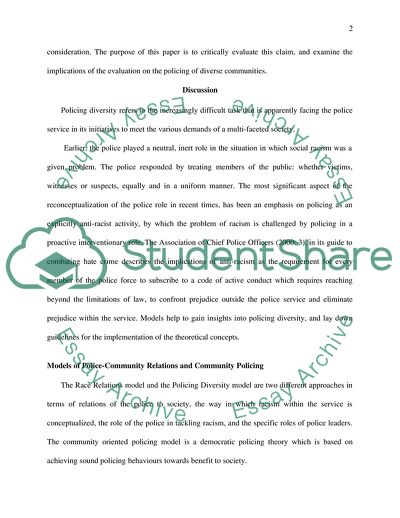Cite this document
(The Implications of the Evaluation on the Policing of Diverse Term Paper, n.d.)
The Implications of the Evaluation on the Policing of Diverse Term Paper. https://studentshare.org/social-science/1715678-it-has-been-claimed-that-because-issues-of-race-have-dominated-the-police-diversity-agenda-alternative-dimensions-of-diversity-such-as-gender-age-religion
The Implications of the Evaluation on the Policing of Diverse Term Paper. https://studentshare.org/social-science/1715678-it-has-been-claimed-that-because-issues-of-race-have-dominated-the-police-diversity-agenda-alternative-dimensions-of-diversity-such-as-gender-age-religion
(The Implications of the Evaluation on the Policing of Diverse Term Paper)
The Implications of the Evaluation on the Policing of Diverse Term Paper. https://studentshare.org/social-science/1715678-it-has-been-claimed-that-because-issues-of-race-have-dominated-the-police-diversity-agenda-alternative-dimensions-of-diversity-such-as-gender-age-religion.
The Implications of the Evaluation on the Policing of Diverse Term Paper. https://studentshare.org/social-science/1715678-it-has-been-claimed-that-because-issues-of-race-have-dominated-the-police-diversity-agenda-alternative-dimensions-of-diversity-such-as-gender-age-religion.
“The Implications of the Evaluation on the Policing of Diverse Term Paper”. https://studentshare.org/social-science/1715678-it-has-been-claimed-that-because-issues-of-race-have-dominated-the-police-diversity-agenda-alternative-dimensions-of-diversity-such-as-gender-age-religion.


